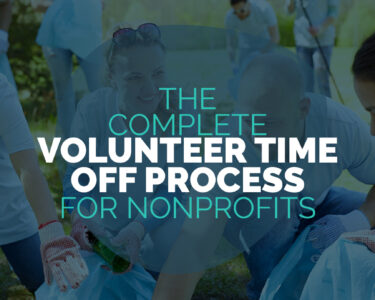A new report from CEP looks at the grantee perceptions of “intermediary funders” — which it defines as a variety of “entities that are regrantors of philanthropic dollars.” It asks two main questions: how do grantee experiences with intermediaries differ from those with originating funders, and what can we learn from intermediaries that grantees rate highly?
On average, intermediary funders perform not much better or worse than traditional foundations on many dimensions — but at their best, they significantly distinguish themselves from the status quo of donor-doer relationships. That’s my big takeaway from the findings of CEP’s recent report, Bridging the Gap: Grantee Perspectives on Intermediary Funders.
As a practitioner who has worked with many such funds and led research efforts on the topic, I eagerly participated on the Advisory Board for CEP’s recently released research. I was thrilled that this research would highlight grantees’ experiences, which is often missing in discussions about philanthropic use of intermediaries.
The report’s findings resonated with my Bridgespan colleagues and me. At The Bridgespan Group, we’re excited about how much capital such collaboratives have unlocked and we are bullish — but not breathless — on the potential for this group’s ability to drive impact. (In our experience, intermediaries refer to themselves by many different terms, including “collaboratives,” “regrantors,” and “funds.” We generally call them collaboratives and will use that term throughout.)
Back in 2021, our research found that collaboratives were growing in number and capable of absorbing and deploying much more than they do today. We strongly believe that — at their best — they offer differential value to grantees.
At the same time, we are cautious about the dramatic rise in new collaboratives as well as the trend of “funders fundraising.” We appreciate that, as CEP’s research has shown, there is indeed significant variation in grantees’ experience with such funders. We therefore want to emphasize the importance of taking an impact lens to the work of collaboratives.
In prior research that compared 10 “successful” collaboratives to 15 other collaboratives that had faltered, we identified components of success that align with CEP’s findings. Three of these were illustrated by the CEP report’s funder profiles of the Groundswell Fund and Conservation Lands Foundations (CLF) — two funds that outperformed according to CEP grantee feedback —and are worth highlighting.
A Strong Grantee Value Proposition
Intermediaries need a distinct reason for being. “Sometimes, as an intermediary funder, we think, should we really be taking this money? Or could we just connect the funder directly with the group,” said Jocelyn Torres, co-interim executive director of Conservation Lands Foundation, in CEP’s report. “They could just build the relationship and get the money directly.” She points out CLF’s unique role in working with grantees who may not have the internal capacity or networks to access those relationships. CLF is that conduit.
Our research reinforces the idea that intermediaries must be clear about their value proposition — to their own funders and grantees, and to the fields and movements that they seek to support. Even successful collaboratives were more likely to meet funders’ expectations than those of their grantees (for example, 92 percent of funders of “successful” collaboratives indicated the benefits exceeded the costs of participation, compared to 80 percent of grantees). This likely is due to collaboratives playing the “intermediary” role — which raises expectations on both sides, and means they need to be crystal clear on their distinct value.
For the Groundswell Fund, one expected collaborative benefit — providing unrestricted funding — is particularly appreciated. “They’re one of the few funders that allow us to have general admin funds,” Tiek Johnson, executive director of Mama Sana Vibrant Woman, told CEP. “They allow us the autonomy to fund projects as we see fit.”
Another common benefit grantees see from collaboratives is access to new funders. Groundswell reports seeking organizations with high potential who might not be on the radar of more traditional foundations. “Our approach is more like, let’s also lift up grantees who may not be hitting their targets but are working toward hitting them and can make a huge difference in their communities,” angélique nguyễn green, chief advancement officer at Groundswell, told CEP.
Many collaboratives actively promote directly linking donors to their grantees. For example, Forest, People, Climate (FPC), a philanthropic collaborative that works to halt and reverse tropical deforestation through just, sustainable development, actively removes barriers to funding at the local level. It offers funders two pathways to get involved: through FPC, which then moves funding through a network of grantmakers, or by aligning funding and directly supporting organizations. “FPC unites established and new donors around strategies shaped by those closest to the issues while recognizing the need for systemic change,” said Nancy Lindborg, President and CEO of the David and Lucile Packard Foundation, an FPC funder.
An Operating Model That Centers Grantees
The two intermediaries in CEP’s report that get high marks from grantees both reflected on critical aspects of their organization that set them up for success. “The vast majority of staff at Groundswell come from organizing,” angélique nguyễn green shared with CEP. “It makes a difference when you have folks who have been in the work helping to establish what it means to be in the right relationship with grantee organizations.” Our research indicates that there is no one way to structure a collaborative fund — but ensuring that one’s organization aligns with its value proposition is critical.
Both standout intermediaries underscored that ultimately, good grantmaking comes down to human connection. “I cannot emphasize enough that building relationships with nonprofit grantees makes a huge difference,” Jocelyn Torres, co-interim executive director of Conservation Lands Foundation, told CEP. “As we’ve learned from the pandemic, things can happen that completely shift the way you do your work, so having that relationship and being able to talk through ideas or challenges with our grantees makes for a better product at the end of the day.”
Similarly, FPC has invested deeply in building a network of hundreds of experts, largely from tropical forest countries, who collaboratively designed and informed their strategies. As CLUA (which hosts FPC) Executive Director Lindsey Allen says, “FPC is focused on ensuring funding flows to where it is most needed — particularly to partners based in tropical forest countries including Indigenous Peoples, local communities, and Afro-descendent people in tropical forest countries.”
Thoughtful and Creative About Measuring Grantee Success
As we learned while researching our recent article “How Philanthropic Collaboratives Measure, Evaluate, and Learn,”measurement, evaluation, and learning is a common challenge for collaboratives. In fact, with additional funding, nearly 70 percent of surveyed collaboratives would prioritize investing in their measurement. Collaboratives and intermediaries need to report back to donors, much like their grantees do to them — and, as our research found, such measurement often relies heavily on measuring the impact of their grantees, which can overburden grantees.
Collaboratives and intermediaries often pursue generational social change — goals with time horizons far beyond traditional grantmaking terms. “Why should we be measuring the drop if we’re trying to change the ocean?” said Tracy Van Slyke, chief strategy officer of the Pop Culture Collaborative. Still, there are short-term milestones that can help assess progress against long-term commitments — like tracking how a system or field changes over time.
We identified a few areas for collaboratives to consider when evaluating work at the grantee-level. First: look at your entire portfolio of grantees vs. focusing on individual grantees. This might include tracking the proportion of grantees meeting their own milestones, or the proportion that attracted follow-on funding.
Groundswell, for instance, focuses on organizations who might be overlooked by larger foundations, as angélique nguyễn green shared with CEP: “Not a lot of big foundations will take that risk, because they want to be able to show a beautifully designed impact report and say, ‘Look what our grantees have done with our investments.’” For such intermediaries to track what proportion of grantees they are uniquely funding at a given scale can be powerful — and reinforce their unique value proposition.
Second, and relevant to the CEP report, is to prioritize the grantee experience. “Turning the lens on themselves” as those who participated in CEP’s Grantee Perception Report or other forms of surveying and feedback gathering did, can better inform collaboratives of their strengths and areas for improvement.
Looking Ahead
Like the larger funder landscape, intermediaries and funder collaboratives occupy a spectrum in their engagement with grantees. The CEP report highlights well how two funders stand out in these areas — offering lessons beneficial to others that aspire to do the same. What I find most gratifying in the CEP report is how it teases out characteristics of the most successful intermediaries — as judged by their own grantees — that help unlock more resources and drive greater impact.
We know that fewer high net worth donors seek to build their own large, staffed foundations, yet most remain eager to give significantly to important social causes. We know that collaborative vehicles move significant sums to social change — and more than half of these funds have been founded since 2010, indicating the momentum of this giving approach.
In further research, we believe it will be critical to continue to learn about intermediaries’ impact on grantees. It will also be critical to not just compare them to originating/traditional foundations, but also to compare them to the opportunity cost of funders not giving at all. Forthcoming Bridgespan research, funded by The Bill & Melinda Gates Foundation, will seek to understand more about donors who give via collaboratives and what might unlock more such giving.
Alison Powell is a partner at The Bridgespan Group and co-leads the philanthropy practice out of the San Francisco office.
👇Follow more 👇
👉 bdphone.com
👉 ultraactivation.com
👉 trainingreferral.com
👉 shaplafood.com
👉 bangladeshi.help
👉 www.forexdhaka.com
👉 uncommunication.com
👉 ultra-sim.com
👉 forexdhaka.com
👉 ultrafxfund.com
👉 ultractivation.com
👉 bdphoneonline.com




